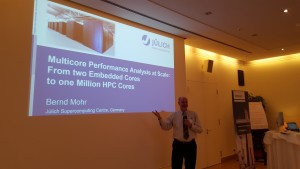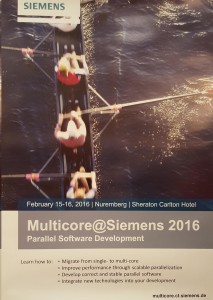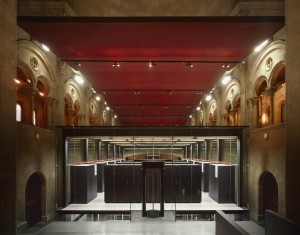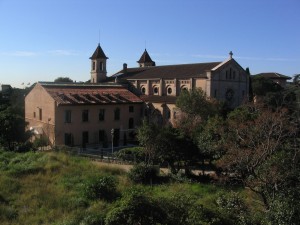[Note: This is an article I originally wrote for TOP500 Blog. It is reproduced with permission here.]
While there is always a lot of buzz about the latest HPC hardware architecture developments or exascale programming methods and tools, everyone agrees that in the end the only thing that counts are the results and societal impact produced by the technology. Results and impacts are coming from the scientific and industrial applications running on HPC systems. The application space is diverse ranging from astrophysics (A) to zymology (Z). So the question arises of how to effectively fund development and optimization of HPC applications to make them suitable for current petascale and future exascale systems.
The answer was provided in the European Union (EU) Horizon 2020 (H2020) e-Infrastructures call, Centres of Excellence for computing applications, which was initiated in September 2014. The work would establish a limited number of Centres of Excellence (CoE) necessary to ensure EU competitiveness in the application of HPC for addressing scientific, industrial or societal challenges. The Centres were conceived to be user-focused, develop a culture of excellence, both scientific and industrial, and place computational science and the harnessing of “big data” at the center of scientific discovery and industrial competitiveness. Centres could be thematic, addressing specific application domains such as medicine, life science or energy; transversal, focused on computational science (e.g., algorithms, analytics, and numerical methods); challenge-driven, addressing societal or industrial challenges (e.g., aging, climate change, and clean transport); or a combination of these approaches.
Eight Centres of Excellence for computing applications were subsequently selected for funding and established before the end of 2015. They cover important areas like renewable energy, materials modeling and design, molecular and atomic modeling, climate change, global system science, and bio-molecular research, as well as tools to improve HPC applications performance. Now, nine months later, these Centres are up and running and it is worth to have a closer look at the different ones:
- CoeGSS – CoE for Global Systems Science will address the emerging scientific domain of Global Systems Science (GSS), which is a vital challenge for modern societies to understand global systems and related policies. The field will use high performance computing as a critical tool to help overcome extremely complex societal and scientific obstacles. Due to the nature of the problems addressed in typical GSS applications, the relevant data sets are usually very large, highly heterogeneous in nature, and are expected to grow tremendously over time. Bridging HPC with high performance data analysis is thus the key to the success of GSS in the next decade.
- EoCoE – Energy Oriented CoE is helping the EU transition to a reliable and low-carbon energy supply using HPC. The Centre is focusing on applications in (a) meteorology as a means to predict variability of solar and wind energy production; (b) materials employed for photovoltaic cells, batteries and super capacitors for energy storage; (c) water as a vector for thermal or kinetic energies, focusing on geothermal and hydropower; and (d) fusion for electricity plants as a long-term alternative energy source. These four areas will be anchored within a strong transversal multidisciplinary basis providing expertise in advanced mathematics, linear algebra, algorithms, and HPC tools.
- E-CAM – Supporting HPC Simulation in Industry and Academia is an e-infrastructure for software, training and consultancy in simulation and modeling. It will identify the needs of its 12 industrial partners and build appropriate consultancy services. E-CAM plans to create over 150 new, robust software modules, directed at industrial and academic users, in the areas of electronic structure calculations, classical molecular dynamics, quantum dynamics, and mesoscale and multi-scale modeling.
- ESiWACE – CoE in Simulation of Weather and Climate in Europe is leveraging two established European networks: the European Network for Earth System modelling (ENES) representing the European climate modeling community and the world leading European Centre for Medium-Range Weather Forecasts (ECMWF). Its goal is to substantially improve the efficiency and productivity of numerical weather and climate simulation on HPC platforms by supporting the end-to-end workflow of global Earth system modeling in a HPC environment.
- MaX – Materials design at the eXascale CoE is supporting developers and end users in materials simulations, design and discovery. It is enabling the best use of HPC technologies by creating an ecosystem of codes, data workflows, analysis, and services in material science to sustain this effort. At the same time, it will enable the exascale transition in the materials domain by developing advanced programming models, novel algorithms, domain-specific libraries, in-memory data management, software/hardware co-design and technology-transfer actions.
- NOMAD – The Novel Materials Discovery Laboratory is developing a materials encyclopedia and big data analytics toolset for materials science and engineering. The Centre will integrate the leading codes and make their results comparable by converting (and compressing) existing inputs and outputs into a common format, thus making this valuable data accessible (as the NOMAD Repository) to academia and industry. It currently contains over three million entries.
- BioExcel – CoE for Biomolecular Research is operating towards advancement and support of the HPC software ecosystem in the life sciences domain. Research and expertise covers structural and functional studies of the main building blocks of living organisms (proteins, DNA, membranes, etc.) and techniques for modeling their interactions, ranging from quantum to coarse-grained models, up to the level of a single cell. The Centre will improve the performance, efficiency and scalability of key codes in biomolecular science, make ICT technologies and workflows easier to use, promote best practices, and train end users.
- POP — Performance Optimisation and Productivity CoE gathers leading experts in performance tools/analysis and programming models in Europe. It is the only transversal CoE. The Centre offers services to the academic and industrial communities to help them better understand the behavior of their applications, suggests the most productive directions for optimizing the performance of the codes, and helps implementing those transformations in the most productive way. The consortium includes academic and supercomputing centers with a long track record of world-class research, as well as service companies and associations with leading expertise in high performance support services and promotion.
Teams from the Jülich Supercomputing Centre are involved in four of the CoE: EoCoE, E-CAM, MaX, and POP (where my team is participating).







![[Bernd Mohr]](https://blogs.fz-juelich.de/berndmohr/wp-content/uploads/sites/5/2015/12/mohr_jugene-200x300.jpg)
Recent Comments